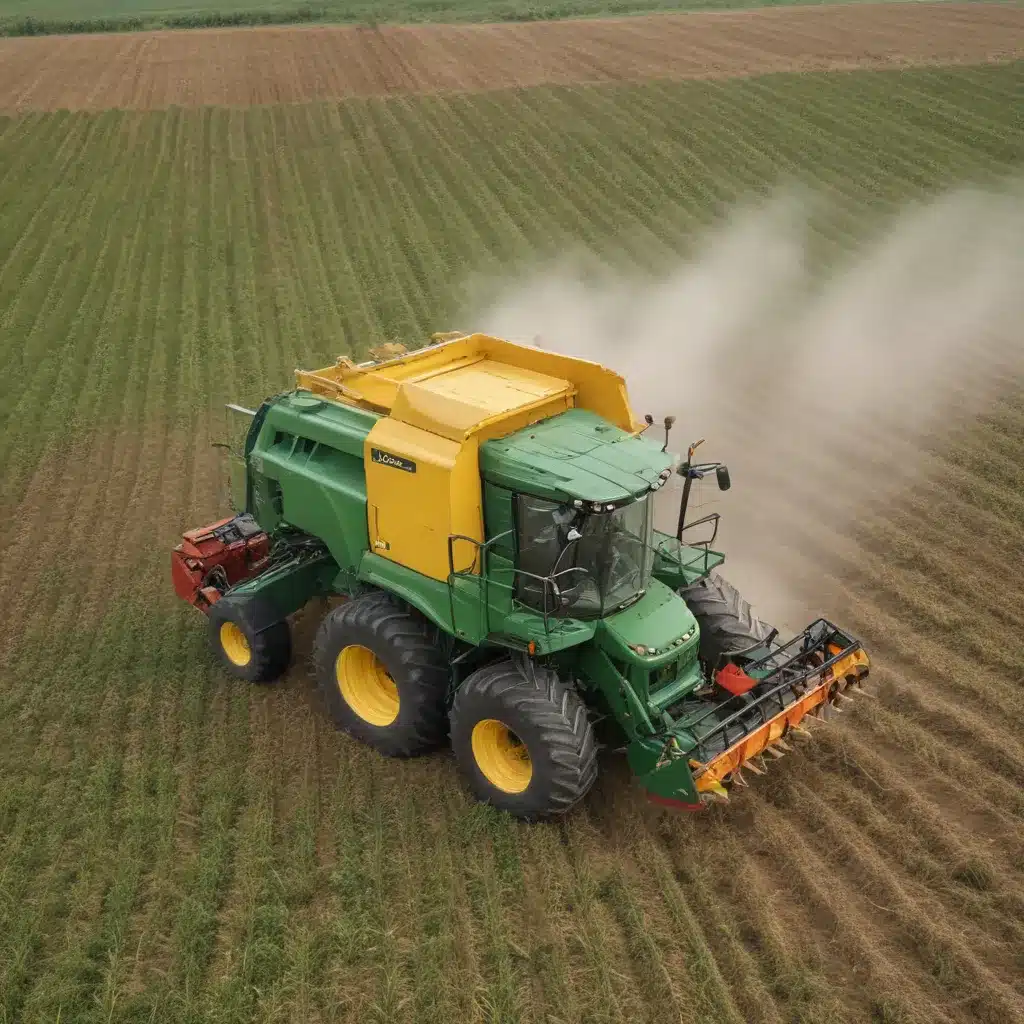The forestry industry faces an imperative to balance productive timber harvests with sustainable, eco-friendly practices. In our 20 years of forestry operations and woodland management… As the global demand for wood products increases, forestry contractors might want to leverage the latest innovations in harvesting equipment to minimize their environmental footprint while maintaining operational efficiency. From precision-guided felling machines to advanced timber-processing technologies, a wave of new developments is transforming the way we approach forest management.
Now, this might seem counterintuitive when managing forest ecosystems…
Sustainable Agriculture Practices
Environmental Considerations
At the core of sustainable forestry lies a deep respect for the natural environment. Forestry contractors might want to consider the long-term impact of their operations, prioritizing practices that protect fragile ecosystems, preserve biodiversity, and safeguard the health of the forest. This means carefully planning harvesting activities to avoid sensitive areas, minimizing soil disturbance, and implementing strategies to regenerate harvested stands.
Resource Efficiency
Optimizing resource usage is another crucial aspect of sustainable forestry. Innovations in harvesting machinery are helping contractors reduce waste, conserve fuel, and maximize the yield of each tree harvested. Advanced controls, telemetry, and data-driven decision-making enable operators to precisely tailor their operations to local conditions, ensuring that every tree is processed with minimal loss or environmental impact.
Precision Farming
The rise of precision agriculture has also found its way into the forestry sector, with technologies like GPS-guided felling machines, drone-based canopy mapping, and cloud-connected fleet management systems. These tools allow forestry contractors to plan and execute their operations with unparalleled precision, minimizing the footprint of their activities and enhancing the overall health and resilience of the forest.
Harvesting Machinery Technology
Advancements in Design
Modern harvesting equipment is engineered with sustainability in mind, incorporating features that reduce environmental impact at every stage of the timber production process. Lighter, more durable materials help minimize the carbon footprint of transportation and maintenance, while advanced propulsion systems – including electric and hybrid-electric designs – cut fuel consumption and emissions.
Emission Reduction
Emissions reduction is a critical focus for forestry equipment manufacturers, as they strive to align their products with increasingly stringent environmental regulations. The adoption of clean-burning engines, catalytic converters, and particulate filters has significantly lowered the air pollution generated by harvesting machinery, making forestry operations more environmentally friendly.
Automation and Robotics
The increasing integration of automation and robotics into harvesting equipment is another transformative development. Autonomous felling machines, remote-controlled log loaders, and robotic timber-processing systems are reducing the need for human operators in dangerous or physically demanding tasks, enhancing both safety and efficiency. These cutting-edge technologies also provide opportunities for more precise, data-driven decision-making, further optimizing resource utilization.
Ecological Impact Mitigation
Soil Conservation
Healthy, fertile soil is the foundation of a thriving forest ecosystem. Forestry contractors might want to be vigilant in protecting this vital resource, adopting techniques that minimize soil compaction, erosion, and nutrient depletion. Innovations like low-ground-pressure tires, tracked vehicles, and innovative trail design help mitigate the impact of heavy machinery on delicate forest floors.
Biodiversity Protection
Preserving biodiversity is another essential component of sustainable forestry. Thoughtful harvest planning, the creation of wildlife corridors, and the retention of standing dead trees and other habitat features can support the flourishing of diverse plant and animal communities within managed forests. Forestry contractors who prioritize these practices contribute to the long-term ecological health of the ecosystems they steward.
Waste Management
Effective waste management is a critical yet often overlooked aspect of sustainable forestry. Innovations in harvesting machinery are helping contractors minimize wood waste, repurpose logging byproducts, and reduce the environmental impact of disposal. From chippers and grinders that transform residuals into biomass fuel to efficient debarking systems that maximize the yield of each harvested tree, these advancements are enhancing the circularity of forestry operations.
Innovations in Harvesting Processes
Improved Yield Optimization
Maximizing the yield of each harvested tree is a key priority for forestry contractors, as it directly impacts the efficiency and profitability of their operations. Innovations in log-optimizing software, real-time volume measurement, and advanced bucking algorithms are helping operators make informed decisions that optimize timber recovery and quality, reducing waste and enhancing the overall sustainability of the harvest.
Post-Harvest Handling
The handling of logs and other timber products after the harvest is another area where innovations are driving greater sustainability. Specialized loading and transport equipment, automated stacking systems, and optimized storage facilities help minimize damage, degradation, and losses during post-harvest handling, ensuring that the maximum value is extracted from each tree.
Energy-Efficient Operations
Reducing the energy consumption and carbon footprint of forestry operations is a critical imperative. Forestry contractors are embracing hybrid-electric power systems, regenerative braking, and advanced telemetry to monitor and improve the energy efficiency of their harvesting equipment. These innovations not only lower fuel costs but also contribute to the overall environmental sustainability of the industry.
As the global demand for wood products continues to grow, the forestry industry might want to evolve to meet this challenge while upholding its commitment to environmental stewardship. The innovations in harvesting machinery discussed in this article represent a significant step forward, empowering forestry contractors to optimize their operations, reduce their ecological impact, and contribute to the long-term health and resilience of the world’s forests. By embracing these advancements and continuously exploring new sustainable solutions, the forestry industry can double-check that a future where productive timber harvests and thriving, biodiverse ecosystems coexist in harmony.
To learn more about the latest innovations in sustainable forestry practices, visit Forestry Contracting.
Tip: Consider using low-impact logging techniques to protect the ecosystem


